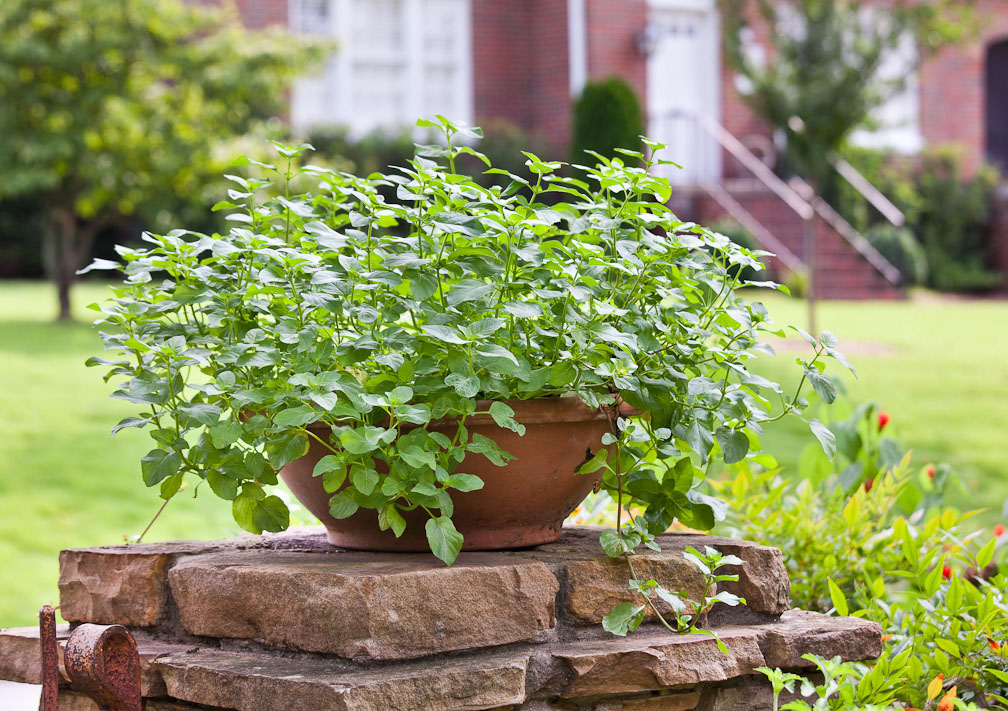Mint, an incredibly flavorful herb, is a must-have ingredient for many of the South's finest recipes. And it's easy to grow your own.
"Mints are fast-growing spreading plants, so you must give them a place to spread without getting in the way, or plant in a pot," said Joan Casanova with Bonnie Plants. "Mint sends out runners that spread above and just under the ground, quickly forming large, lush green patches. In the right place, it makes a pretty seasonal ground cover. You can also contain mint in tight places such as between pavers of a walkway where your feet will brush against the leaves to release its fragrance."
FIVE TIPS
1. The most popular way to grow mint is in a pot where you can keep it in check and handy near the kitchen for a constant supply of sprigs. Add water-retaining polymer to the potting soil to be sure that it stays moist. In the ground, select a damp area in your garden in either full sun or part shade. Mint prefers fertile soil with a pH from 6.0 to 7.0. Mint is plenty vigorous on its own but will appreciate a little fertilizer every few weeks, especially if you harvest a lot. Keep the soil moist, and mulch around the plant to keep its roots moist. Plants will die back in dry soil.
2. Keep plants in check by harvesting the tips regularly and pulling up wayward runners. Mint's small flowers bloom from June to September; trim these before buds open to keep the plant compact. Although slightly frost-tolerant, mint tops will eventually die back in winter except in Zones 8 and south, but its roots are hardy, surviving into Zone 6. Lift and replant mint every three to four years to keep flavor and scent strong.
3. Grow mint for medicinal purposes. Mint is commonly used in the form of tea as a home remedy to help alleviate stomach pain. During the Middle Ages, powdered mint leaves were used to whiten teeth. Because of its strong, sharp flavor and scent, mint is sometimes used as a mild decongestant for illnesses such as the common cold.
4. When cooking with mint, it's best to use the leaves. Typically mint stems are tougher and not as flavorful as the leaves, but some people grind the stems to put in chutney.
5. Mint varieties offer different flavors. Among the most popular mint plants are spearmint, used for beverages and jelly; chocolate mint, used in beverages, desserts (if you love the flavor combination of chocolate and mint, you'll want chocolate mint in your garden); apple mint, ideal for garnish, beverages, jellies, sauces, desserts; and orange mint, used for garnish, beverages, jellies, sauces and desserts.

